1. Meaning of Accounting
- Books Name
- CA Shivali kedia Accountancy Book
- Publication
- CA Shivali kedia
- Course
- CBSE Class 11
- Subject
- Accountancy
Meaning of Accounting:
“Accounting may be defined as the process of recording, classifying, summarizing, analyzing and interpreting the financial transactions and communicating the results to the persons interested in this information”
Only Events related to Business which can be expressed in terms of Money are Economic Transactions and Economic Events.
1. Generally Accepted Accounting Principles
- Books Name
- CA Shivali kedia Accountancy Book
- Publication
- CA Shivali kedia
- Course
- CBSE Class 11
- Subject
- Accountancy
Generally Accepted Accounting Principles
- GAAP is a collection of commonly followed accounting rules and standards in the preparation of financial statements.
- GAAPs are generic in nature and every country has its own GAAP, Example UK GAAP, US GAAP.
- In India, we have Indian Accounting Standards which are more specific to Indian Accountants.
- These principles are referred to as concepts or principles.
- Accountants are prepared on the basis of the principles laid down by IFRS.
- IFRS helps in Financial statements comparison, uniformity and analysis.
- The standards are prepared by the Financial Accounting Standards Board (FASB)
- These principles are constantly changing due to changes in the external environment (legal, social and economic environment)
- Cost basis principle requires that assets will be shown in the financial statements “on cost” i.e. on the purchase price. This has to be supported with the bill or voucher for correctness and trueness.
2. Basic Accounting Concepts
- Books Name
- CA Shivali kedia Accountancy Book
- Publication
- CA Shivali kedia
- Course
- CBSE Class 11
- Subject
- Accountancy
Accounting assumptions
It is mandatory for every relisted company to get its accounts audited by an independent chartered accountant.
This has to be done for the use of financial statements. Whenever a company’s accounts are closed on 31st March, the CA goes and checks the correctness of the profit and loss account balance sheet and if you are reported to shareholders that everything is true and fair.
Accounting assumptions are three points which are assumed by the CA that comma these three assumptions are followed by the company while making the final accounts that is profit and loss and balance sheet.
Going concern assumption
Under this assumption, it is assumed that the business is going to continue for the next possible future that is there is no hurdle and the company’s operations are running smoothly.
Now, why is something so obvious an important accounting assumption let's understand the help of a scenario.
Imagine a scenario where there is a fire in the companies goes down biggest godown and all the production has stopped temporarily.
If the owner lets out this information that the production has stopped immediately the market value will go down the creditors will get upset the banks who have given loans will get alerted it will create more problems for the company because a company always wants to survive.
To protect the uses of financial statements is important for the CA to give his report on whether the fundamental accounting assumption of going concerned has been affected or not
What will happen if the going concern of a company is affected
The difference between capital expenditure and revenue expenditure is over. If there is no distinction between revenue expenditure and capital expenditure. All the major expenditures are considered as expenses and they're expensed out in the profit and loss accounts.
Accrual
In old times how did businessmen calculate their profit and losses? It was very simple to add all the cash which has been received in a given year and subtract all the payments made this year if there is any cash left in its profits.
Companies act 2013 does not follow this manner of accounting. Companies act says that it doesn't matter whether cash has been received or not in a given year. What matters is whether it was this current year's income.
Let us say that rent per month is rs 1000 yearly rent becomes 1000 into 12000 rupees. You have been the rent for April to December that is 1000 into 9 9000 rupees but you could not pay for January 2 March 3 months 3 into 3000.
As per accrual, it doesn't matter how much cash you have paid you have to account for the entire 12 months expense.
Similarly, it does not matter if you have received the income in cash or not what matters is it the income of the current year
Income of the current year minus expense of the current year can only give us the profit for the whole year.
In the case of cash basis of accounting, it is difficult and almost impossible to get the profit for the whole 12 months if you are not considering income and expenses for the 12th months.
There are four accounts that we will study in the approval system in the coming chapters namely outstanding expense prepaid expense accrued income and unearned income
Consistency
If you are planning to become a finance professional, you will realize that a companies act and income tax act gives us a few flexibility or options while preparing accounts.
For example
There are two methods of calculating depreciation which was going to study this year. Straight-line method and written down value method. The company can choose what method suits it best. Another example which you are going to study next year. While preparing the capital account apartments can follow 2 methods fixed capital account and fluctuating capital account.
The consistency principle says whenever a company chooses anyone such a method for the next years and the coming future years the company has to be consistent with it and continue using the same method.
So if the company follows the straight-line method in this year and next year changes it to the return down value method it will be in contradiction to the principle of consistency.
Business entity principle
Let me start with an example
Ram and Shyam are two friends who want to open a firm called RS and associates.
Ram and Shyam are two different beings who have their respective birth certificates driving licenses and Aadhar cards. When both of them registered a firm called RS and associates a new artificial baby is born in the eyes of the law. Rs associate is a new person different from its owners Ram and Shyam. Run associates will have a separate bank account separate address proof and a separate identity.
The business entity principle explains that a business is a different entity from its owners.
Accounting period concept
As per the income tax act, 1962 and the companies act 2013 all the businesses in India prepare their books of accounts annually starting from the first of April and ending to ending 31st March.
Under the accounting period concept, it becomes important to calculate the profits for a given period in which can be monthly quarterly or annually. Around the World books of accounts are prepared for 12 months that is annually
Cost concept
The cost concept mandates that the acid will appear in the balance sheet on its cost price full stop for example.
A business purchased a building for 3 lakh rupees and after 10 years the market value has raised reason to 50 lakh. According to the cost, concept acids are recorded in the balance sheet on cost price that is bracket open purchase price closed not the market value.
What is the cost?
Cost is considered the purchase price plus all the expenses in curd to bring the acid into using condition.
For example, we purchase AC for 25000 and to start and make it in a working condition we spend 2000 or the carpenter and 1000 on the transportation charges. As per the cost concept, the cost of the AC is 25000 + 2000 + 10000 which is 28000. In our books, the AC will be recorded on the planting machinery head for 28000.
Dual aspect principle or double entry principle
In accounts, every transaction happening will have at least two effects that is it will affect at least two accounts.
It is obvious but let us understands with the help of an example
You go to buy a burger at McDonald's now what is happening here you are paying rs 50 to McDonald's and you are getting one burger we are a customer so we have to think from the point of you of the business here the business is McDonald's. The two things happening in this one transaction are one McDonald's is receiving money second McDonald's product the stock is going out.
In accountancy, everything is recorded on a double-entry system every transaction has two sides
Revenue Recognition Concept.
Let’s take an example:
Our Year of Accounting is from 1 April 2022 to 31 March 2023. The businessman sold goods worth Rs. 30,000 on 25 march 2023 but it’s a credit sale. The money will be received in the next year on 10 April 2023.
When will you count this sale? In the year 2022-2023 or the year next to that?
As per the revenue Recognition concept and Accrual Assumption. The sale of Rs. 30,000 will be recorded in the year the Sale took Place, not when money is realized.
Matching Concept
How will we calculate the Profit for the year 2022- 2023?
It’s simple. Add all the Revenue and Incomes received in the Current Year (2022-2023) and subtract all the expenses related to generating the Revenue (Business Expenses).
Why is this an important Accounting Principle? Let’s understand.
Suppose
Rent of Business is Rs. 20,000 p.m. Yearly Rent is Rs. 20,000*12 = Rs. 2,40,000.
Out of this Rs. 40,000 isn’t paid in Cash and is outstanding to be paid in the next year. The accountant did not fully record the Expense as it is not paid and charged only Rs. 2,00,000 in the Current Year (2022-2023).
Do you think that we got the correct profit for the year?
No, we did not. Matching concepts implies that all the revenues earned during one accounting year (whether received or not) have to be matched with the expenses incurred (Paid or outstanding) during the year to calculate the correct profit of that year.
Full Disclosure
As mandated by the Companies Act 2013, every company must disclose all information that is material and relevant to the user of financial statements. This helps the users to make more informed decisions.
Conservatism Concept (Prudence)
Prudence concept requires that the company should:
- Account for all losses which are anticipated in the future (even if losses have not been incurred)
- Account for all gains only when they are realized. (Gains cannot be recorded in the anticipation of gain.)
Materiality Concept
While Accounting the company needs to follow the full disclosure concept but very small transactions for example expense on stationery, pen, and pencils are not material. Even if they are missed in the financial statements, they still give a True picture.
Because the Materiality concept requires that all material facts need to be disclosed.
Objectivity Concept
Accounting is a manmade concept. Entries are made and checked by human beings. Human beings are not free from Bias.
That is why Accounting requires each transaction to be evidenced by proof or a bill. Accounting needs to be objective so that the users can fairly rely on the information which is correct and based on facts.
2. Accounting as a source of information
- Books Name
- CA Shivali kedia Accountancy Book
- Publication
- CA Shivali kedia
- Course
- CBSE Class 11
- Subject
- Accountancy
Accounting as Source of Information
Accounting provides a) relevant information to users of financial statements, so that they can be b) informed decisions (On the basis of the financial statements). It helps users analyze the risks and uncertainties and ways to mitigate (minimize) them.
Let us understand the qualitative characteristics of Accounting!
Reliability
Imagine in our cafe Harsh has had an accountant. But the accountant is not a good person the accounting information expenses sales his recording are not true there all fall at the end of the year Harsh will not people to rely on that data is not true hence the first characteristic qualitative characteristic of data is it should be reliable and true
Relevance
The data has to be relevant to the user of the financial statements because data helps in making the decisions in the future data is the basis of making the decisions about the business in the future.
In short, no one can rely on decisions made when the accounts are all wrong and unreliable,
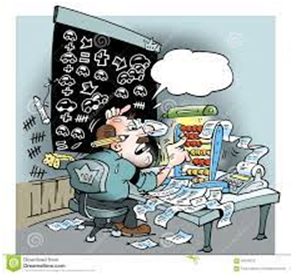
Understandability
In accountancy, we learn how to deal and interact with books of accounts and financial information. Sometimes there is no face-to-face communication between the accountant and the owner. At the end of the year, the accountant sometimes might just hand over the accounts to the owner.
Understandability explains refers to that the accounts should be prepared in such a way that even if there is no physical interaction the book of books of account should be self-explanatory to the person who is reading them understandability is very important for communication of financial information

Comparability
The accounting information should be comparable to the previous year’s information.
Sometimes the businesses compare their performance with the performance of similar companies in the industry.
Hence accounts should be prepared in such a way that they can be easily compared with in previous years and within our competitors as well
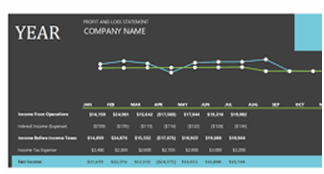
3. Objectives of Accounting
- Books Name
- CA Shivali kedia Accountancy Book
- Publication
- CA Shivali kedia
- Course
- CBSE Class 11
- Subject
- Accountancy
Objectives of Accounting
The job of an accountant is to be able to maintain a systematic record of financial information namely journal ledger profitability and financial position
We have been introduced to the journal and ledger above in the definition of accounting
- The major objective of books of accounts accountancy is to calculate the profit earned or loss suffered in a given year. This is calculated by preparing a profit and loss account which you will learn in the course of this year
- Another important aspect of the objectives of accounting is to determine the financial position at the end of every year that is assets liabilities and capital at the end of the year.

Proper maintenance of books of accounts assists the management in planning and decision-making throughout the lifetime of the business
Note for students.
(As accounts students it is very important for us to understand the meaning of certain words.)
Quantitative
Quantitative data is something that is a number based which can be measured which can be counted.
For example how much salary does a CA make in a year?
Qualitative
Qualitative data relates to other than numbers characteristics.
For example, is the CA a girl or a boy
Is the CA hard working employee or a lazy one
4. Role of Accounting
- Books Name
- CA Shivali kedia Accountancy Book
- Publication
- CA Shivali kedia
- Course
- CBSE Class 11
- Subject
- Accountancy
Roles of Accounting
The keywords here are identifying measuring recording and communicating. Let us study this in a little bit of detail
1. Identifying relevant transactions
Depending on the size of the business and hundreds of transactions can take place in a single day. Not everything can be recorded in the books of account. For all these transactions the accountant has to identify those transactions which are related to the business which are monetary in nature and which will come in our books of accounts
Example: Suppose Harsh Buys a refrigerator for a home for Rs.50,000. Which is a Business Transaction.
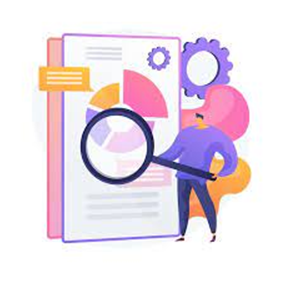
2. Measurement
Let us take a scenario where are trader trading in stationery items is selling the items within India and is also exporting some of his items to a dealer in China. What will be the common unit what will be the measuring unit will it be rupees will it be Paisa over let be a dollar a single unit common for all transactions has to be taken into account which is not to be changed every year.
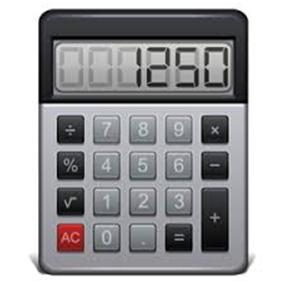
3. Recording

This is the basic (First) function of accounting for all business transactions all monetary (related to money) business transactions such as
Eg. sales purchases salaries and electricity are recorded or accounted in the books of account.
The recording is done in a book called journal which will study more in the coming chapters.
After the Accountant has recorded data the data has to be classified in a systematic manner,
similar accounts are grouped and placed in one place called a book called ledger this is the second step of recording
from journal we record the transactions all the transactions falling under the same head in an account called ledger which will study ahead in the coming chapters.
4. Communication
After the accounts has been recorded and measured analyzed the job of an accountant does it complete at this point.
Communication is concerned with transmitting the information to the end-users of financial statements so they can prepare to make decisions on the basis of books of accounts.

Why do the accountants need to communicate the results of the books of account or communicate the results of the books of accounts to the uses of financial statements who are these uses of financial statements let us understand?
There can be two kinds of uses of two financial statements. External users and internal users. People who are on the payroll (on salary) of the company are called internal uses to financial statements.

Internal users
If the company is growing, the employee’s growth is certain. The CEO the CFO vice president managers plant manager's there all internal to the organization and hence internal uses of the organization
External users
A business cannot function alone there are banks who give loans to the businesses there are creditors who give the gift credit to the businesses there is the government who keeps an eye if they are papering a taxes correctly or not the customer buys are products because he trusts us all these people are external to the organization they are dealing with the organization from the outside and external uses of financial information
Users Why do they need information?
Investors return on money invested in the business
Unions and employee groups Stability in Income, Bonus (Out of profits)
Lenders and Banks Credibility of the company
Creditor’s Continuous supply of products
Government and related Organisations Complaisance and payments of dues
Social Groups Impact on the environment
Other fields of accounting
Financial accounting refers to the preparation and interpretation of financial information and communication to the users of accounts. This is what we have understood above accounting is the basic sense
Management accounting refers to internal reporting to the management of the business. Management accountant is a very important component that helps the management make important decisions regarding the business operations
Cost accounting
Cost accountants are usually hired by companies that are dealing with manufacturing products. For any manufacturer cost of the product manufactured by him is the most important factor which decides his profits
All this tells you about the person or the data but not that they mention any quantity or numbers
Accounting has certain qualitative characteristics let us understand what qualitative characteristics are.
Accounting data should be recorded in such a way that it is very easy and understandable and useful to the person who uses that data.
For example, if I just randomly right 10 numbers it will not make any sense
But let’s say that these 10 numbers are the marks of the students in your class then it would make sense
5. Basic terms in Accounting
- Books Name
- CA Shivali kedia Accountancy Book
- Publication
- CA Shivali kedia
- Course
- CBSE Class 11
- Subject
- Accountancy
Basic Terms of Accounting
Follow the Story
17-year-old Harsh
Harsh is a commerce student in class 12th who is very confident and smart and wants to run a business like his father.

Although, he was average in his studies but had a smart business mind.
He wanted to start a business of opening a small café in his locality after his school.
He discussed this idea with his father.
His father wanted him to open this business but only if he pursues college along side

His father liked his business Idea and Gave him Rs.10 lacs to start the cafe

Exercise for students:
List down how will Harsh spend this 10 Lac Rupees to start his café.
1)_____________
2)_____________
3)_____________
4)_____________
5)_____________
6)_____________
7)____________
Starting the cafe
1) Place to run business (either Buy or Rent)
2) Hire a Cook and Staff (Salary)
•3)Raw materials (Breads, Eggs, vegetables)
•4) Griller, Deep freezer
•5) Registration and other expenses, etc
How many did you get right?
Accountancy is very closely related to practical and day-to-day life.
Let us understand the basic terms
Capital
Money which is invested by the Owner in starting the business is called capital.
Remember, when Harsh needed 10 Lacs rupees, his father gave him this money for free. Its Harsh’s (owners) money.
Harsh started his café with RsLacs of his own money, called capital which he does have to pay back to his father.

Assets
•Assets are resources which are owned by “Business” which has some value.
•In Harsh Story What are the items whchhasrh purchased (Which has a value)
•Deep freeze, Griller, oven, raw materials like cheese, bread, spices, etc
•If Harsh wants to see any of these, at any point, he will get some value.
•Assets are further classified into 2 broad categories
Assets Classification
Non Current Asset
•Some assets have a life of more than one year.
•Furniture, Air condition, Car, Truck, Plant and Machinery
•Land, Building, Long term investments etc
•We will talk more on this later
Current Assets
•On the other hand, some assets have a short shelf life
•Inventory (Stock), Debtors, Cash, Bank, Current investments
Liabilities
•Let us assume, that Harsh, spent all the 1Rs,10,00,000 and required 5 lacs more to run the business.
•He went to his father who refused to give him more money for the business

Harsh’s father asked him to reach out to the Bank.
Because Banks gives us loan repayable after a certain point.
Harsh will have to pay Interest on this loan

•Harsh gets 5 lac rupees from bank as Loan loan repayable in 5 years with 10% interest p.a

Although Harsh is happy that he got to money to start his business.

Please remember that he will have to pay back the bank this loan or bank will forfeit his assets.
This is a liability of Harsh’s Café, an obligation which needs to be paid in the future.

Liabilities classification
Non CurrentLiabilites
Bank Loans (Repayabale after1 year)
Other Long term loans
Current Liabilites
•Bank Loans (Repayable in less than 1 year)
•Creditors
•Bills Payable
Loan and capital ?
Capital
•Money which is invested by the Owner in starting the business is called capital.
•Example: Money Harsh received from his father which he doesn’t need to pay be to his father.
Loan
•Money invested in the business, which has to be repaid to a third party, after a point of time with interest is called Loan
•Example: Money Harsh received from Bank which has to be paud back after 5 years with interest.

Harsh successfully Opens his Café
Lets move ahead in our story!!
Sales
The café sells its first burger i.e. makes it first “SALE”
Sales are total Revenues from good and services sold to consumers in a given year.
Sales can be made in cash, called cash sales.
Sales can also be made on credit called credit sales
It’s the owners decision and industry standards on cash and credit sale depending on the product and service.
Sales and revenue
Sales
•Sales are total Revenues from good and services sold to consumers in a given year.
•Eg: Selling of Burgers and sandwiches in the café and taking service charge from customers for the services provided by the café
Revenue/Income
•Revenue is the sum total of Sales and other income
•Other Income includes income earned by business from sources, other than its “main operations”
•Example: Harsh’s café sells and old AC foe 15000. This 15000 is not sales but is “other income “for the café

Now the café became profitable. Lets understand how
Expenses

For generating sales, all the cost incurred by the business is called expenses.
In Harsh’s café, think of the expenses incurred to sell that one burger:
1)Salary to cook and staff2)Electricity expenses
3)Purchase of raw material
There are a lot of other expenses which I leave to the students to think and list.

Expenses and Expenditure
Expenses
•Costs incurred by business for generating sales. •It’s recurring in nature.
•Wages, salaries, electricity bill, water bills, repairs, purchases etc
•Expenses are subtracted from sales to calculate profits for the year.
Expenses are a yearly concept, that is, the benefit of this expense is exhausted within a year
Expenditure
•Cost incurred by business for some benefit, generating sales or acquiring property for business
•Wages, salaries, purchases, land purchased, revenue purchased
•The benefit of expenditure is not exhausted in one year.
If café purchases delivery scooter, the scooter will run for more than one year. The benefit accrues for more than one year unlike expenses
Profit = Revenue – Related expenses
•Related expenses means expenses reated to business. Eg: Salary, wages, etc.
•Unrelated expenses are expenses which are not related to business of café.
For the café, unrelated expenses eg. Repairs made for colony gate where café is situated

Profit and Gain
Profit
•Excess of revenue over related expenses is called Profit.
•If selling price of burger is Rs 500 and total cost of making that burger is Rs 200. Then profit will be Rs. 300.
Gain
•Gains are profit arising from a transaction which is not the main operations of the business
•For example: :Harsh’s café sells and old AC and made a profit of 5000. This 5000 will not be called proft but is gain to the business the café
Loss
The excess of expenses of a given period (Financial year) , over Income (Revenue) of a given period is called Loss.

In our Café,
1)let’s say Total Revenue for the year 2022-2023 is Rs, 12,00,000
2)Expenses of salaries, purchases of raw materials, bills is 14,00,000
3)So the the year 2022-2023, Harsh’s café made a loss of (2,00,000)
Inventory (Stock/Goods)
Inventory are goods used in production process, as well as, finished goods produced thereafter.
Inventory also includes good lying with the trading concerns where no production process is carried on.
In Harsh’s Café, the café used raw materials (eg: Vegetables, milk, bakery products) , to produced finished goods Eg: (Pizza, Sandwiches), etc. All these will be considered as Inventory

Goods and Stock
•Goods are the products which are being purchased and sold by the business. Goods and Inventory is often used interchangeably.
•Please note, there are various products which the business purchases in its day to day working. Such items are not categorised as goods, for example in Harsh café, stationary (like bill rolls, pens, stapler) will be purchased. These will not be categorised as goods.
•Inventory are goods used in production process, as well as, finished goods produced thereafter.
•Inventory also includes good lying with the trading concerns where no production process is carried on.
Drawings
No, Not what you are thinking!
These are not doodling or drawing, literally.
When the owner withdraws money or any other asset from business for his “ personal needs” is called Drawings.

In Harsh’s example,
Lets say, after making the business protitable, now he wants to take a vacation with his family to Paris. He withdraws Rs, 5,00,000 from the business Bank Account. These Rs, 5 lacs will be considered drawings in the accounts of the business.
Purchases
•Purchases are expense incurred by the owner on purchase of inventory, on cash or credit.
Note for Students: Don’t think about purchases you would make as an individual
•Think from the company's or proprietor’s viewpoint. It has to be a purchase the business
•In Harsh’s café, if you purchase a burger, it’s a Sale for the business.
•But the purchases made by the café to make that one burger will be a Purchase for the business.
Discount
•Consider this example,
•You are a friend of Harsh and you visit his café to have dinner with your family. You bill comes out to Rs. 2,500.
•Harsh Gives you a discount of 20% and you end up paying only Rs. 2,000.
•Harsh gave you a discount of Rs,500. It is a loss to the business.
•Discount is the reduction on the sale price of the sales.
•In Accounting Discount is of two kinds. Lets discuss this on the next slide
Trade Discount & Discount (Cash Discount
Trade Discount
•This discount is given when a customer places an order in bulk.
•Higher Sales orders are always preferred by sellers and businesses. To encourage that, Trade discount is given to the customer on bulk orders
Cash Discount
•Usually in businesses, Sale/purchase happen on a Credit basis, from buyers and sellers.
•If a customer is willing to make the puchase in Cash, they are given a discount. Because cash is a preferred mode of payment.
•Cash is dear to the business.
Debtors (Credit Sales)
•When a business makes a sale and agrees to the terms of receiving the sales value, at some future date from the customer, the customer becomes debtor of the company.
If a Harsh’s café sells a big order of Rs.10,000 to a customer (Mr. A) who agrees to clear the bill in one month’s time. Mr. A becomes the debtor to the company.
Creditor (Credit Purchases)
•When a business purchases goods from a seller, say Mr. X and agrees to pay Mr. X the money at a future date. Mr. X becomes a creditor to the business.
•It becomes a liability or obligation for the business to pa Mr. X at a future date.
•In our example:
•If Harsh’s café purchases bread on credit from the bakery owner and pay on later date (say end of every month).
•Then the Bakery owner will be accounted as Creditor in the books of harsh’s case Business.
Business Entity
Harsh Opened a Café and named it “Harsh’s Café”. He registered his business are a sole proprietorship (You will learn about this in class 11 business studies).
After he got his form registered, Harsh and Harsh’s café as 2 different persons in the eyes of law.
As soon as the owner registers the business, a new person is born in the eyes of the law, different from its owner.
Transaction
Transaction means an event or activity where one party is a receiver and other is a giver. It can be anything, like paying electricity bills, purchase of raw materials, making sales, etc

Voucher
Voucher is a evidence of the transaction in the court of law. Please look at the sales voucher below:
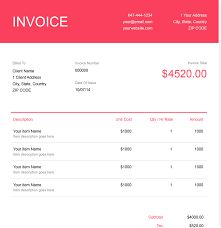
3. System of Accounting
- Books Name
- CA Shivali kedia Accountancy Book
- Publication
- CA Shivali kedia
- Course
- CBSE Class 11
- Subject
- Accountancy
There are 2 systems of Accounting
- Double Entry System
Every transaction has 2 effects (Debit and Credit).
Eg 1: One person is receiving, another person is giving
Eg. 2: Suppose Ramesh purchases an office table by giving cash; the office table is coming in and cash is going out.
- Single Entry System
Because every transaction has 2 sides; maintaining accounts on the basis of a Single entry is not considered reliable under the Companies Act 2013. Although small businessmen adopt this method for ease of Accounting.
4. Basis of Accounting
- Books Name
- CA Shivali kedia Accountancy Book
- Publication
- CA Shivali kedia
- Course
- CBSE Class 11
- Subject
- Accountancy
Please read the case study
Suppose the grocery owner pay the rent of Rs.1000 per month. Yearly rent comes out to be 1000×12 that is Rs.12,000 annually. COVID-19 affected a lot of businesses so the grocery owner could not be six
months of rent. COVID-19 affected a lot of businesses so the grocery owner could not be six months of rent. So in the current year the grocery owner paid six months’ rent that is 6000 in cash be next year And 6000 is outstanding which will pay next year
There are 2 basis of Accounting 1) Cash basis Accounting And Accrual Basis Accounting
Cash Basis Accounting: Cash basis is the simplest form of accounting. Suppose you are a small businessman who owns a grocery shop. Under cash basis accounting all the shop owner needs to do is add all the cash coming in in one year and subtract all the cash he’s which is going out as payments. It can be a profit or loss.
Under cash basis accounting the owner will record the cash only cash payments that are he will record a rent of 6000. In cash basis accounting full 12 months’ rent is not charged here. If hundred percent of rent is not charged then I will be getting the correct profit? This is the reason companies act 2013 does not allow a company to prepare its books on the basis of cash basis accounting. Cash basis accounting is only followed by a very small business man
Accrual Basis of Accounting
Under accrual basis accounting the companies act 2013 requires the owner to charge all the incomes and expenses of 12 months so that the correct profit for 12 months can be arrived.
So here irrespective of how much cash has been paid for rent we will record the entire 12,000 as rent in arriving the profit/loss for the year.
There are 4 Accounts Relating to Accrual concept which we will study in the next chapter.
Outstanding Expenses, Prepaid expenses, Accrued Income and Unearned Income.
5. Accounting Standards
- Books Name
- CA Shivali kedia Accountancy Book
- Publication
- CA Shivali kedia
- Course
- CBSE Class 11
- Subject
- Accountancy
The Institute of Chartered Accountants of India defines Accounting Standards as
The written policy documents issued by the expert accounting body cover the aspects of recognition measurement presentation and disclosure of accounting transactions in financial statements.
Accounting standard lays down standard accounting policies valuation techniques and disclosure requirements. It helps with comparing the financial statements of the company with other companies.
Benefits of accounting standards
By following accounting standards the accountant has the following benefits of accounting standards by setting accounting standards the accountant has the following benefits
- Eliminate confusing variations in accounting treatment used to prepare accounting statements
- Standards make the call for disclosures in the financial statements which are not required by law and is always better for the user of financial statements.
- Accounting standards facilitates makes possible comparison of financial statements of companies situated in different parts of the world. For example, the financial statements of Pizza Hut in India and Pizza Hut in the US will be comparable because of accounting standards
Limitations of Accounting Standards
- Accounting standards give solutions and choices between alternative accounting treatments. The accountants find it difficult to make a choice between these different treatments
- Accounting standards cannot override the statute the standards or to be framed or made with a restricted scope
Applicability of accounting standards (Who all need to follow as)
- Sole Proprietor
- Joint Hindu Undivided Family
- Trusts
- Societies
- Cooperatives
- Companies
- Association of persons
Basically, ALL forms of business organizations need to follow AS.
Need for Accounting Standards
- Accounting standards make the financial statements of different companies, across different countries comparable with each other.
- Accounting standards help us provide full information as the standards focus on full disclosure of information in the financial statements
- Accounting standards provide us with various alternate accounting solutions and treatments which can be followed by the entity

 SS MUKHI
SS MUKHI
